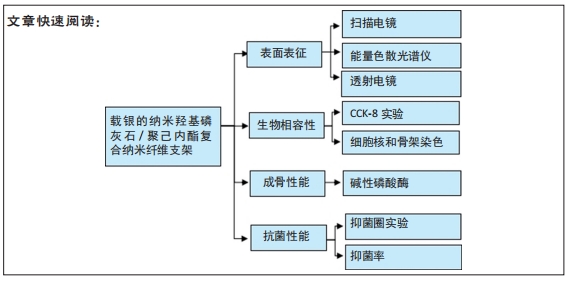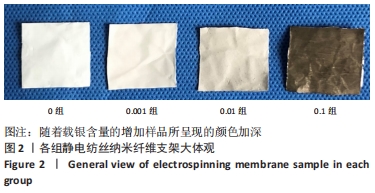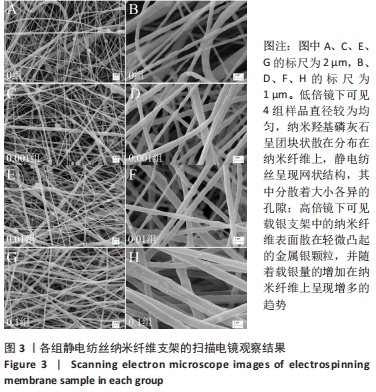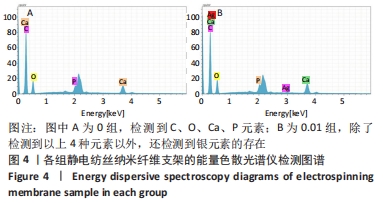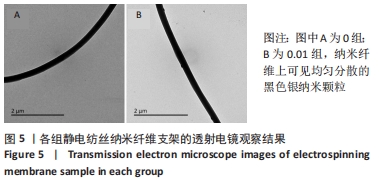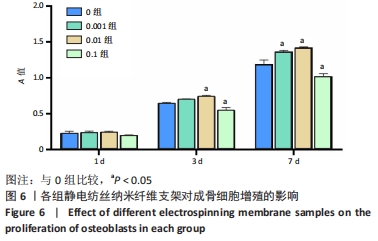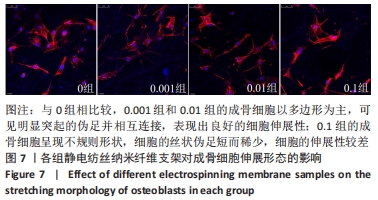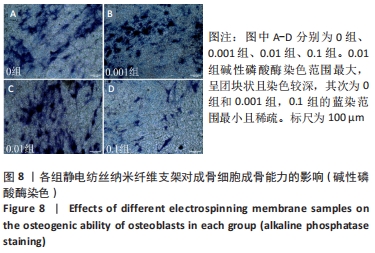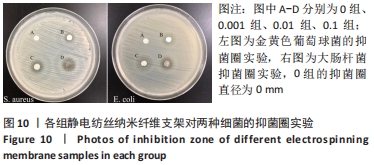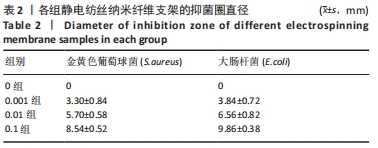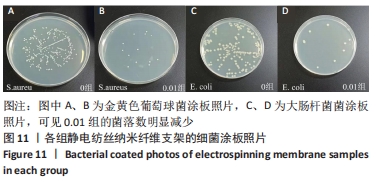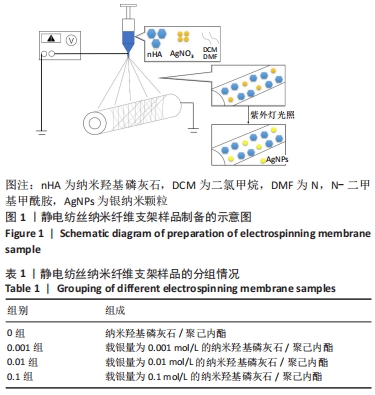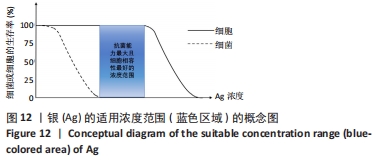[1] YANG JW, HIROKI U, MISHINA Y. Energy metabolism: A newly emerging target of BMP signaling in bone homeostasis. Bone. 2020;138:115467.
[2] MASTERS EA, TROMBETTA RP, DE MESY BENTLEY KL, et al. Evolving concepts in bone infection: redefining “biofilm”, “acute vs. chronic osteomyelitis”, “the immune proteome” and “local antibiotic therapy”. Bone Res. 2019;7:20.
[3] KARYGIANNI L, REN Z, KOO H, et al. Biofilm Matrixome: Extracellular Components in Structured Microbial Communities. Trends Microbiol. 2020;28(8):668-681.
[4] MALIKMAMMADOV E, TANIR TE, KIZILTAY A, et al. PCL and PCL-based materials in biomedical applications. J Biomater Sci Polym Ed. 2018;29: 863-893.
[5] CHOU PY, CHOU YC, LAI YH, et al. Fabrication of Drug-Eluting Nano-Hydroxylapatite Filled Polycaprolactone Nanocomposites Using Solution-Extrusion 3D Printing Technique. Polymers (Basel). 2021;13(3):318.
[6] PARK S, KIM JE, HAN J, et al. 3D-Printed Poly(ε-Caprolactone)/Hydroxyapatite Scaffolds Modified with Alkaline Hydrolysis Enhance Osteogenesis In Vitro. Polymers (Basel). 2021;13(2):257.
[7] BARNES CP, SELL SA, BOLAND ED, et al. Nanofiber technology: Designing the next generation of tissue engineering scaffolds. Adv Drug Deliv Rev. 2007;59(14):1413-1433.
[8] MIRICĂ IC, FURTOS G, LUCACIU O, et al. Electrospun Membranes Based on Polycaprolactone, Nano-Hydroxyapatite and Metronidazole. Materials (Basel). 2021;14(4):931.
[9] EL-HABASHY S, ELTAHER H, GABALLAH A, et al. Biomaterial-Based Nanocomposite for Osteogenic Repurposing of Doxycycline. Int J Nanomedicine. 2021;16:1103-1126.
[10] LIU HM, DU YY, YANG GJ, et al. Delivering Proangiogenic Factors from 3D-Printed Polycaprolactone Scaffolds for Vascularized Bone Regeneration. Adv Healthc Mater. 2020;9(23):2000727.
[11] HE YZ, JIN YH, WANG XM, et al. An Antimicrobial Peptide-Loaded Gelatin/Chitosan Nanofibrous Membrane Fabricated by Sequential Layer-by-Layer Electrospinning and Electrospraying Techniques. Nanomaterials (Basel). 2018;8(5):327.
[12] JUNG WK, KOO HC, KIM KW, et al. Antibacterial Activity and Mechanism of Action of the Silver Ion in Staphylococcus aureus and Escherichia coli. Appl Environ Microbiol. 2008;74(7):2171-2178.
[13] SILVER S. Bacterial silver resistance: molecular biology and uses and misuses of silver compounds. FEMS Microbiol Rev. 2003;27(2-3): 341-353.
[14] WYPIJ M, JĘDRZEJEWSKI T, OSTROWSKI M, et al. Biogenic Silver Nanoparticles: Assessment of Their Cytotoxicity, Genotoxicity and Study of Capping Proteins. Molecules. 2020;25(13):3022.
[15] Vik H, Andersen KJ, Julshamn K, et al. Neuropathy caused by silver absorption from arthroplasty cement. Lancet. 1985;1:872.
[16] QIAN YZ, ZHOU XF, ZHANG FM, et al. Triple PLGA/PCL Scaffold Modification Including Silver Impregnation, Collagen Coating, and Electrospinning Significantly Improve Biocompatibility, Antimicrobial, and Osteogenic Properties for Orofacial Tissue Regeneration. ACS Appl Mater Interfaces. 2019;11(41):37381-37396.
[17] PATERSON TE, SHI R, TIAN JJ, et al. Electrospun Scaffolds Containing Silver-Doped Hydroxyapatite with Antimicrobial Properties for Applications in Orthopedic and Dental Bone Surgery. J Funct Biomater. 2020;11(3):58.
[18] 王乐,惠敏,董西玲,等.缓释阿托伐他汀钙纳米纤维支架对细胞黏附增殖的影响[J].中国组织工程研究,2020,24(28):4492-4497.
[19] BALLESTEROS CAS, CORREA DS, ZUCOLOTTO V. Polycaprolactone nanofiber mats decorated with photoresponsive nanogels and silver nanoparticles: Slow release for antibacterial control. Mater Sci Eng C Mater Biol Appl. 2020;107:110334.
[20] HASSAN AA, RADWAN HA, ABDELAAL SA, et al. Polycaprolactone based electrospun matrices loaded with Ag/hydroxyapatite as wound dressings: Morphology, cell adhesion and antibacterial activity. Int J Pharm. 2021;593:120143.
[21] 刘丹丹.静电纺丝法制备纳米级银颗粒EVOH导向纤维及其性能研究[D].西安:西安科技大学,2019.
[22] BHULLAR SK, RUZGAR DG, FORTUNATO G, et al. A Facile Method for Controlled Fabrication of Hybrid Silver Nanoparticle-Poly(ε-Caprolactone) Fibrous Constructs with Antimicrobial Properties. J Nanosci Nanotechnol. 2019;19(11):6949-6955.
[23] ALI W, VALBONE S, MATTHIAS L, et al. Electrical conductivity of silver nanoparticle doped carbon nanofibres measured by CS-AFM. RSC Adv. 2019;9(8):4553-4562.
[24] QUIRÓS J, BORGES JP, BOLTES K, et al. Antimicrobial electrospun silver-, copper- and zinc-doped polyvinylpyrrolidone nanofibers. J Hazard Mater. 2015;299:298-305.
[25] PASTORIZA-SANTOS I, SERRA-RODRÍGUEZ C, LIZ-MARZÁN LM. Self-Assembly of Silver Particle Monolayers on Glass from Ag(+) Solutions in DMF. J Colloid Interface Sci. 2000;221(2):236-241.
[26] CAO HL, ZHANG WJ, MENG FH, et al. Osteogenesis Catalyzed by Titanium-Supported Silver Nanoparticles. ACS Appl Mater Interfaces. 2017;9(6):5149-5157.
[27] NING CY, WANG XL, LI LH, et al. Concentration Ranges of Antibacterial Cations for Showing the Highest Antibacterial Efficacy but the Least Cytotoxicity against Mammalian Cells: Implications for a New Antibacterial Mechanism. Chem Res Toxicol. 2015;28(9):1815-1822.
[28] SHIMABUKURO M. Antibacterial Property and Biocompatibility of Silver, Copper, and Zinc in Titanium Dioxide Layers Incorporated by One-Step Micro-Arc Oxidation: A Review. Antibiotics (Basel). 2020:9(10):716.
[29] LÜTHJE FL, JENSEN LK, JENSEN HE, et al. The inflammatory response to bone infection - a review based on animal models and human patients. APMIS. 2020;128:275-286.
[30] GUNDTOFT PH, PEDERSEN AB, SCHØNHEYDER HC, et al. One-year incidence of prosthetic joint infection in total hip arthroplasty: a cohort study with linkage of the Danish Hip Arthroplasty Register and Danish Microbiology Databases. Osteoarthritis Cartilage. 2017;25(5):685-693.
[31] SCHIERHOLZ JM, BEUTH J. Implant infections: a haven for opportunistic bacteria. J Hosp Infect. 2001;49(2):87-93.
[32] DURÁN N, DURÁN M, DE JESUS MB, et al. Silver Nanoparticles: A New View on Mechanistic Aspects on Antimicrobial Activity. Nanomedicine. 2016;12:789-799.
[33] YAN L, XIANG Y, YU J, et al. Fabrication of Antibacterial and Antiwear Hydroxyapatite Coatings via In Situ Chitosan-Mediated Pulse Electrochemical Deposition. ACS Appl Mater Interfaces. 2017;9(5):5023-5030.
[34] RIEGER KA, CHO HJ, YEUNG HF, et al. Antimicrobial Activity of Silver Ions Released from Zeolites Immobilized on Cellulose Nanofiber Mats. ACS Appl Mater Interfaces. 2016;8(5):3032-3040.
[35] FENG QL, WU J, CHEN GQ, et al. A mechanistic study of the antibacterial effect of silver ions on Escherichia coli and Staphylococcus aureus. J Biomed Mater Res. 2000;52(4):662-668.
[36] DAI GY, TANG SC, WANG TL. A novel approach to prepare high antibacterial polylactic acid surface encapsulated nano-silver through stereocomplexation. Mater Res Express. 2019;6(5):55310.
[37] SHEIKH FA, BARAKAT NA, KANJWAL MA, et al. Electrospun titanium dioxide nanofibers containing hydroxyapatite and silver nanoparticles as future implant materials. J Mater Sci Mater Med. 2010;21:2551-2559.
|
